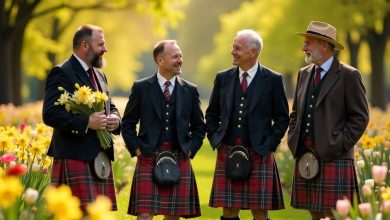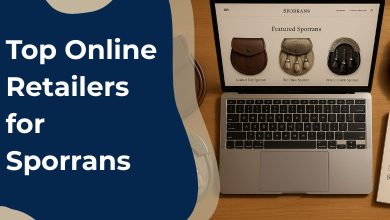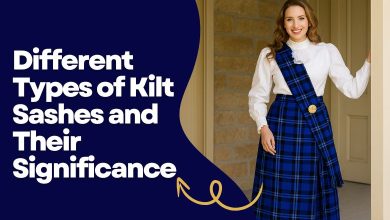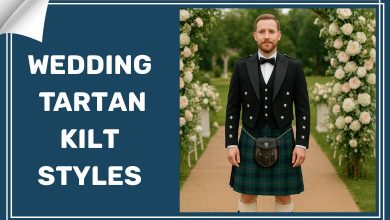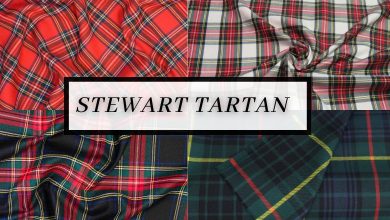Everything You Need to Know About Kilt Belts
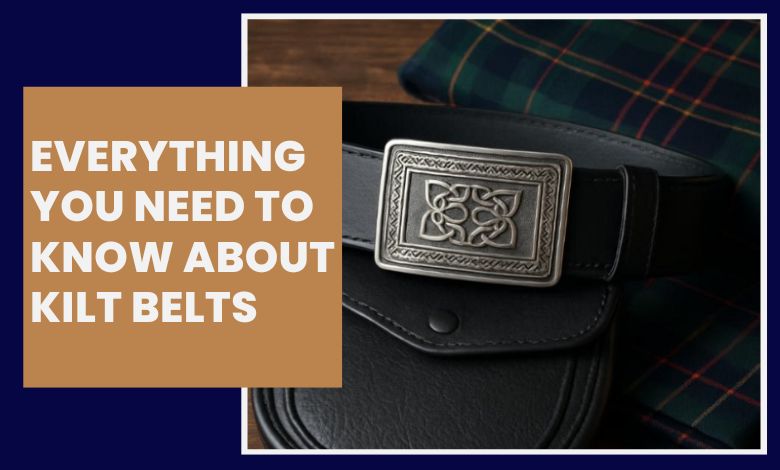
Traditional Scottish attire often features many accessories that are paired traditionally and functionally. Every attachment has a specific role like sporrans carry items and brooches hold fly plaid. Similarly, belts securely fit the kilts and help represent the culture, thanks to metal or pewter buckles. Our center of attention today is the belt worn with kilts, and this article covers many relevant aspects from its introduction and history to answer your frequently asked questions.
Table of Contents
ToggleWhat is a Kilt Belt?
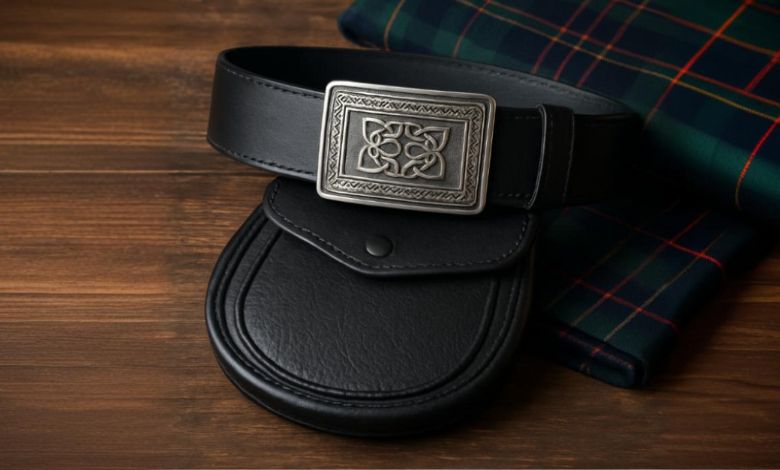
Many consider kilt belts and standard belts to be the same, but there are significant differences between them. The first difference lies in their width as kilt belts are wider and are designed to fit the loops on a kilt. Their wider size supports the kilt’s heavy fabric and maintains its shape.
Standard belts, on the other hand, are narrow and suitable for pants and trousers because of their compact loops. Like kilt sporrans made of leather, the construction of belts takes place with the same material. Therefore, the addition of tartan fabric is optional and such belts are common to spot at traditional events.
| Features | Kilt Belts | Regular Belts |
| Width | 2.25 to 2.5 inches | 1 to 1.5 inches |
| Material | Heavy-duty leather | Various materials (leather, fabric, etc.) |
| Purpose | Primarily decorative, complements the kilt | Functional, holds up trousers |
| Buckle Style | Large, ornate buckles | Small, simple or fashion buckles |
| Compatibility | Designed for kilts with loops or hooks | Designed for standard trouser belt loops |
| Traditional Use | Worn with formal Scottish Highland dress | Everyday wear with pants or jeans |
| Support | Offers minimal support | Provides actual waist support |
| Fastening Holes | Often uses press studs or large holes | Typically multiple small holes with prong buckle |
| Worn Position | Higher on the waist, above hip bones | Around hips or just above |
The Kilt Buckle: Features and Construction
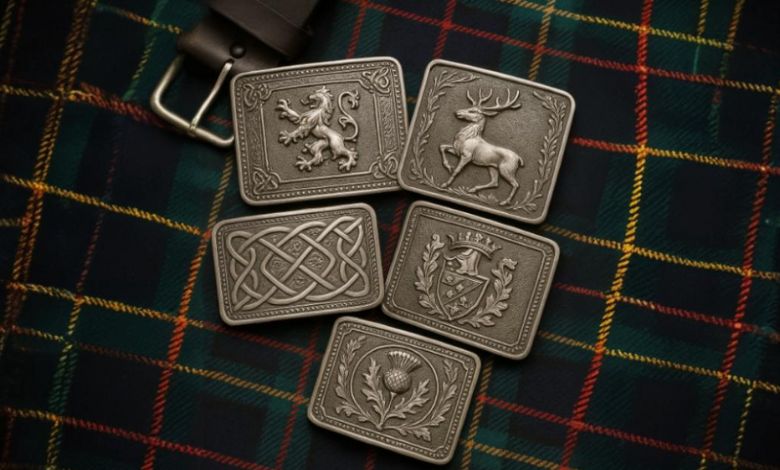
The concept of kilt belts might be clear to you. Now, let’s discuss another part of the belt which is its buckle. Usually made in silver chrome or brass, stainless steel, copper, silver, gold, pewter, and zinc alloy, buckles connect the ends of leather to hold the kilt.
Primary Role
Regarding the primary role of kilt buckles, we find them performing in two major ways: securing kilts for practicality and having designs for being decorative elements. However, there is something else that makes them more worthy and it is engravement of traditional designs revealing the rank and power of wearers.
Common Buckle Styles
As mentioned, buckles have various styles and designs. These designs often feature a family crest, symbolizing a connection to a specific clan. Likewise, other designs such as Celtic knotwork and Scottish symbols like thistle, stag, lion rampant, and more.
How to Choose the Right Kilt Belt and Buckle
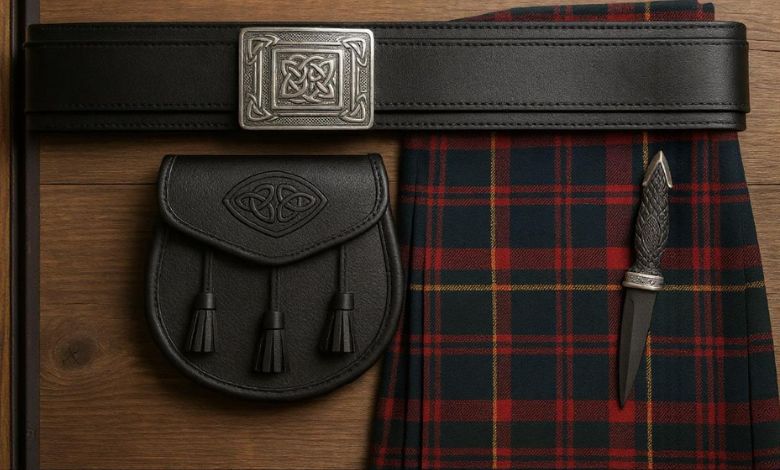
The finest way to maintain the charm of traditional products is to choose the perfect one. The same applies to choosing a kilt belt and buckle. However, you need to know how to pick the right one. Many basic steps have an involvement here like:
Choose Quality Products: The quality matters most for an enhanced look as well as the longevity of the kilt belt and its buckle.
Exact Size: Do not oversee the sizing and make sure the buckle and strap sizes are compatible with each other and the kilt’s belt loops.
Buckle Design: As you know the importance of buckle designs now, choose the one according to the event’s theme.
Personal Style: Your personal style preference matters a lot when buying a kilt. If choosing for a traditional event, choose pure leather made with cultural designs. Otherwise, the stylish one might be sufficient to express your style.
Wearing the Kilt Belt Properly
Knowing the ways to properly attach a belt and buckle properly is essential. Kilt belts and standard trouser belts are not interchangeable due to their design and purpose. A kilt belt should sit on the waistline in a way that its buckle aligns with the sporran’s adjustment. Do not forget that the belt does not pass through the loops but hides loops under it.
If wearing any casual kilt like denim or utility kilt, design and style do not matter. Therefore, they are usually suitable with Argyll Kilt Outfits for formal to semi-formal events since a waistcoat is not an essentiality there.
Maintenance and Care
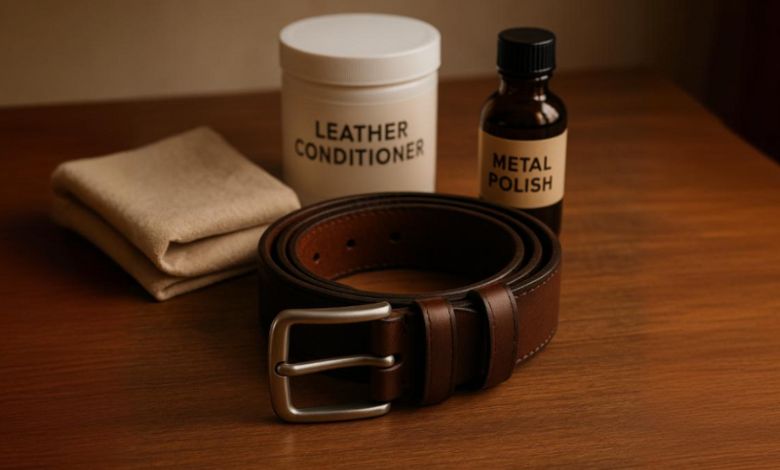
Investing in traditional items is an experience but making this investment a long-term deal depends on you. The best way to do this is to properly care and maintain your belt. The simple steps involve proper cleaning and storing them. Below are some simple steps:
- Clean leather and metal parts (buckle) regularly with a damp cloth.
- Avoid water and use leather conditioners.
- Similarly, many metal cleaners are available today to clean buckles.
- After cleaning both parts with chemicals ensure air drying.
- Do not scrub the leather or buckle with abrasive materials.
- Ensure keeping them out of direct sunlight or heating objects.
Popular Styles and Trends
Leather belts may look the same but buckles are available in different styles. These designs are trends in different eras. So, you must stay updated with current trends and follow them to have a stylish appearance.
Current Trends
The role of the event’s theme is very important when choosing the current trends of the kilt buckles. Some trending styles through the different parts of the year are:
- Minimal Designed Buckles.
- History-Oriented Buckles.
- Extra-large Buckles.
- Identity-based Buckles, like Clan Crest and Celtic Knots.
Customization and Personalized Buckles
Do you know what is the most important aspect of kilt belt and buckle designs today? The ability to customize designs according to your needs is what makes them especially valuable today. Let’s understand this point with a couple of examples. Imagine yourself as a business owner where hundreds of people work and you want them all to have a unique sign as a firm’s identity. You can customize buckles accordingly. Likewise, if you are to participate in a social gathering, making a uniquely designed buckle according to the gathering helps you have a particular identity.
Visit UtilityKilt UK to Buy Quality Kilt Belts and Buckles
The differences between standard and kilt belts, their historical context, tips to choose and maintain, and even the latest trending designs might be clear to you now. It’s time to figure out where you can buy quality products from kilts to sporrans and belts and buckles. The best platform, undoubtedly, is UtilityKilt UK, an online UK-based brand. We have many other things to offer you apart from quality. You have a wide range of products, awesome customization, and above all hassle-free return and exchange policies if the fault is on our side.
FAQs About Kilt Belt & Buckles
Are kilt belts unisex or gender-specific?
Can I use a regular leather belt instead of a kilt belt?
Are kilt belt buckles standardized or do sizes vary?
What is the difference between a kilt belt buckle and a regular belt buckle?
How often should I replace my kilt belt?
Usually, leather belts are long-lasting. If you find leather getting broken or fading its color consider buying a new one.
